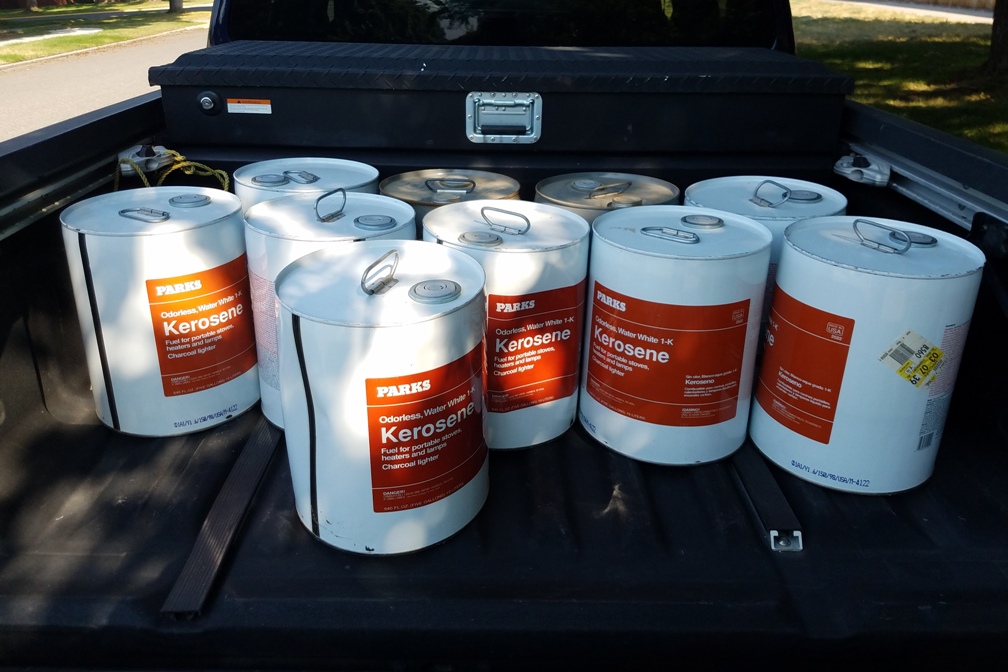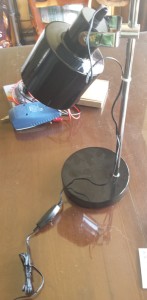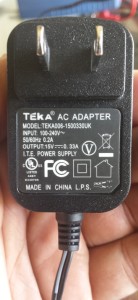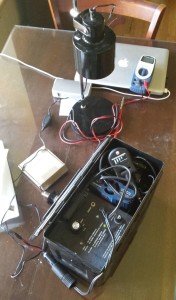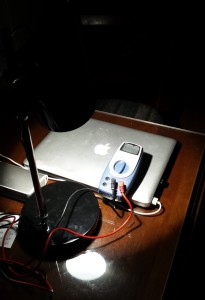Originally published at Notes From The Bunker. You can comment here or there.
I’ve become rather convinced that, for me anyway, the smartphone-type device has a definite bit of utility in preparedness. Currently, I have an iPhone. (I actually like the BlackBerry but given the enormous amount of support for the iPhone product it made more sense on a logistical basis than the BB.) I’m not going to really beat the topic of why I think it has utility, I’ve done that elsewhere, but I want to discuss one of the logical issues about these smartphones – how do you keep them charged when the power is off?
I received, as birthday gifts (thank you!), two different hand-crank chargers. Both use the same technology and have similar uses, although with slight differences. The first was the Freeplay FreeCharge and the other was a similar device marketed as Etón American Red Cross Clipray. Both are basically hand-crank generators with DC output at 12 v. The Eton has a USB port since it seems aimed specifically at USB-style devices, the FreePlay has a 12 v. ‘cigarette lighter’ plug. The Eton is less bulky and also supports a built-in rechargeable LED flashlight…a nice touch..along with a carabiner-style clip to affix the unit to a piece of gear.
and the other was a similar device marketed as Etón American Red Cross Clipray. Both are basically hand-crank generators with DC output at 12 v. The Eton has a USB port since it seems aimed specifically at USB-style devices, the FreePlay has a 12 v. ‘cigarette lighter’ plug. The Eton is less bulky and also supports a built-in rechargeable LED flashlight…a nice touch..along with a carabiner-style clip to affix the unit to a piece of gear.

Handcrank charger -> smartphone. Yeah, it might work but it’s not a really great Plan A. Beats being in the dark, though.
Here’s where the problems come in. There is no free lunch in power generation. Not only do you have to sit there and crank a lot to recharge a cell phone, but the amount of energy you produce fluctuates wildly unless you keep a steady pace that is rather difficult to maintain. In short, don’t think youre going to plug your phone into one of these, crank like a madman for five minutes, and get a charged cellphone. Nope. You’re going to appreciate how much physical effort is required to generate electricity and develop a new understanding of why hydroelectric turbines and other mechanical-energy-to-electrical-energy systems are so wonderful. Plus, since your electrical output is so wildly varied, your sensitive electrical device is going to freak out in a major way and start giving messages about ‘device not charging’ and that sort of thing.
Solutions? Matter of fact, yes. In the comments/reviews on Amazon a fella noted this problem and said what was needed was some sort of regulator between the charger and the device…a buffer to capture the erratic electrical output and hoard it until there was enough charge to be smoothly and uniformly discharged. A battery. Enter this device: Duracell Instant USB Charger with Lithium Ion Battery. Normally you plug this little rechargeable unit into a USB port, on your computer for example, and it charges the on-board battery for use later when you plug your phone into it. All well and good, but for our needs you plug the battery into your handcrank device and use that to charge the battery as you have your smartphone charge from the battery. The battery smooths out the uneven output from your cramp-inducing flurry of handcranking and your smartphone doesn’t freak out at the uneven voltage.

Handcrank -> rechargeable battery -> smartphone. Better, but there’s a lot of time involved with turning that crank. Battery evens out the uneven output from the handcrank.
Now, as I said, once you try recharging any device with one of these handcrank units you are going to really come to appreciate things like wind and hydro turbines and…small solar panels. Personally, when the apocalypse happens I’m not going to have the time to sit around endlessly cranking a little geegaw to charge a battery so I can use my smartphone to read TM’s, take photos for historical purposes, calculate food rations, track consumables, etc, etc…I’ll be too busy doing all the other things that need doing. So…would my Goal0 Nomad 7M Solar Panel suffice to charge the little Duracell battery USB charger? As it turns out, yes. So, rather than sit around cranking away for hours to get my smartphone charged up I just plug the Duracell USB battery into the panel, lay the panel out in the sun and let it do the charging for me. Tedious, repetitive, physical exertion vs. passive solar charging…..no contest. Let me just lay the panel in the sun and get back to hanging looters.
suffice to charge the little Duracell battery USB charger? As it turns out, yes. So, rather than sit around cranking away for hours to get my smartphone charged up I just plug the Duracell USB battery into the panel, lay the panel out in the sun and let it do the charging for me. Tedious, repetitive, physical exertion vs. passive solar charging…..no contest. Let me just lay the panel in the sun and get back to hanging looters.

Panel -> battery -> smartphone. I like this setup. The battery charges as the phone charges, and if the weather is uncooperative I still have a charge in the battery to use to charge the ‘phone. Plus, I don’t have to sit there turning a crank.
Does this mean that there’s no point to the handcrank generators? Not at all. Sometimes there just isn’t any sun to be had. And, sometimes you don’t need to charge a battery..you just need to run a light for a few moments or something similar. Certainly it doesn’t hurt anything to have these options available. Day may come where you’re holed up in your basement for a week with nothing better to do than charge small batteries by hand as you wait for water levels or radiation levels to recede.
Of course, if you’ve got yourself a nice solar panel array already in place, or a happy little min-hydro in your yard, then you can pretty much skip most of this and just add a regulated USB port to your system.
One other thing that I haven’t had a chance to try, and wouldn’t mind some input on, is bicycle-mounted USB chargers. I’ve seen some commercial models that are similar to the old bottle-shaped dynamos that we used to use to run headlights when I as a kid. There aren’t as many out there as I would have thought, but there are a few and also a few DIY plans. I’d be interested in hearing of anyone’s experiences with ‘em.

